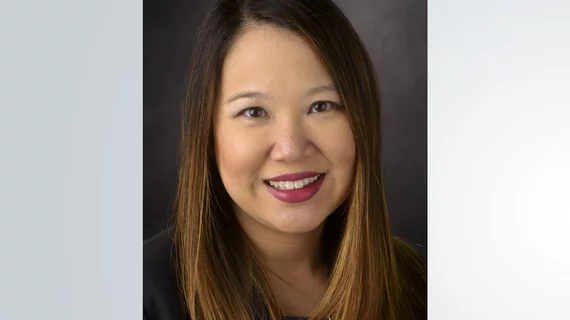Q&A: Melissa M. Chen discusses the importance of patient- and family-centered care in radiology
On July 5, Melissa M. Chen, MD, was named the new chair of the American College of Radiology Commission on Patient-and Family-Centered Care (ACR CPFCC) Economics Committee.
Chen, a neuroradiologist at the University of Texas MD Anderson Cancer Center in Houston, spoke with Radiology Business about taking a more active role in patient care, her committee’s biggest goals and why she’s hopeful about the next generation of radiologists.
The full conversation is below:
How does ACR CPFCC define patient- and family-centered care? Why do you think it is so important to modern healthcare?
Melissa M. Chen, MD: Patient- and family-centered care is an approach to healthcare where physicians—specifically radiologists—partner with patients and families to improve healthcare. In the past, I think we’ve had a long-standing paternal approach to medicine where “physicians know best,” and we would dictate changes and quality improvement opportunities. In this day and age, though, a lot of that now involves patients, allowing them to be a part of healthcare redesign. We do have patients on our committee, and at the beginning of any project, we need to challenge ourselves to approach families and patients about how we’re providing care as radiologists and how we can improve.
This is important because it’s the right thing to do. CMS is definitely trying to encourage patient- and family-centered care, but this is also about improving patient outcomes. Studies have shown that patient outcomes are better when they are involved in their care and understand their care. Ultimately, that’s why we need to focus on this.
What are some of the ARC CPFCC Economics Committee’s primary goals?
The goal of the committee is to find ways to recognize the value of interactions radiologists have with patients—whether as consultations or helping to coordinate care—and to credit radiologists for those interactions within our current reimbursement system. Of course, we should be doing these things if we are being paid or not, but I do think we need to demonstrate that value first before payment policies are changed. That’s one of our goals. We’re also looking at certain areas where patient interactions occur frequently, areas such as breast imaging and interventional radiology, to help guide us as we define ways to get recognition for activities radiologists are already doing.
When we talk to some people about this, they seem skeptical, but the ACR has always been a step ahead when it comes to engaging with changes in payment policy. This work we’re doing is about remaining engaged with current changes in payment policy.
How do you think radiologists could play a more active role in patient care moving forward?
There are little things—being available when a patient wants to discuss imaging findings, for example. In the past, radiologists have been a little bit skittish about doing that for legal reasons or maybe they are afraid to say something the primary care physician won’t be happy about, but we can be really helpful to patients. Not only could we potentially show patients imaging findings if they request, we can help to coordinate next steps in a care pathway. For example, we can call the referring providers when we see certain imaging findings and facilitate conveying next steps of care to their patients, such as re-starting a medication or advising the patient to schedule a follow-up appointment.
Also, can we be more available from our reading rooms? Why is there not a way to connect with a patient and their primary care physicians to show them their images by sharing a screen? We are limited in our abilities to physically be present at all hospitals or outpatient facilities we provide services to, but we should use technology to connect with our referring providers and patients.
Another big thing is to ensure there is appropriateness in imaging. We should be speaking with physicians, using clinical decision support and be available for more detailed consultations.
Do you think a majority of radiologists want to play this more active role? Have you encountered any radiologists who don’t see the need for such changes?
I think this is like any change—there are radiologists willing to embrace the change or who are already doing this, those who will come around once they see proof it is working and others who will probably fight it. But we need to move forward, and I’m hopeful that the younger generation of radiologists will embrace this. When all of us started in medical school, we wanted to help patients, impact care. I hope we can catch the residents and fellows in that mindset and encourage them to continue down that path. We are simply producing widgets if we don’t provide value outside of the scan we are reading.
What else in the medical imaging industry has your attention right now? Are there any trends, technologies or policies you are watching closely?
One thing is the idea of transparency, both in price and in quality. CMS just put out a Request for Information asking physicians about transparency, so it’s something we are going to have to think about. How does price transparency relate to radiology? We will be working within the committee on this idea.
Another important area is artificial intelligence—how can it help us spend more time with patients? Maybe technology can help us do the mundane tasks so that we can use our time more valuably.

